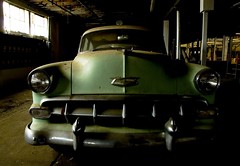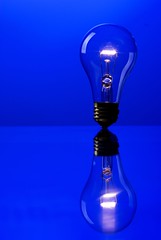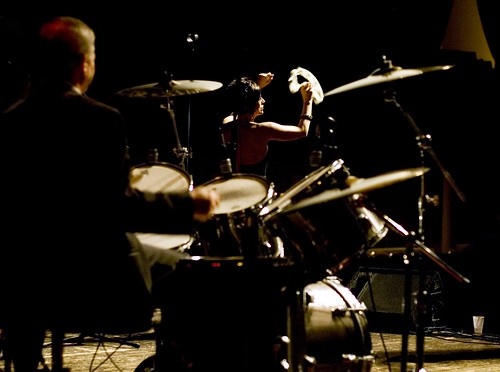General Motors, Ford, and Chrysler are seeking $25 billion in taxpayer funding, supposedly to remain solvent through the year 2009. GM alone lost $7 billion in the third quarter of 2008. America’s largest automotive manufacturer is burning through cash like a Suburban drinks regular unleaded. According to the CEO’s of the Big Three, who this past week failed miserably at acting destitute while flying private jets, there are 240,000 direct auto manufacturing jobs on the line and another 2.2 billion jobs at stake in parts suppliers, dealerships, and other related businesses that depend on car-maker spending.
So should we spend taxpayer money to bail out the Big Three? To their cr edit, Congress has asked to see a viable business plan before doling out any cash. America’s automakers seem to be a house of cards. The weight of thousands of retirees’ benefits are certainly an albatross. Even worse, the United Auto Workers parasitic presence is a burden not borne by foreign competitors. But perhaps most damaging is the inability of the American automakers to design and build cars that people actual want. With the exception of large and luxury SUVs and the surprisingly popular Chevy Malibu, sales figures for nearly every category of cars are dominated by foreign manufacturers.
edit, Congress has asked to see a viable business plan before doling out any cash. America’s automakers seem to be a house of cards. The weight of thousands of retirees’ benefits are certainly an albatross. Even worse, the United Auto Workers parasitic presence is a burden not borne by foreign competitors. But perhaps most damaging is the inability of the American automakers to design and build cars that people actual want. With the exception of large and luxury SUVs and the surprisingly popular Chevy Malibu, sales figures for nearly every category of cars are dominated by foreign manufacturers.
 edit, Congress has asked to see a viable business plan before doling out any cash. America’s automakers seem to be a house of cards. The weight of thousands of retirees’ benefits are certainly an albatross. Even worse, the United Auto Workers parasitic presence is a burden not borne by foreign competitors. But perhaps most damaging is the inability of the American automakers to design and build cars that people actual want. With the exception of large and luxury SUVs and the surprisingly popular Chevy Malibu, sales figures for nearly every category of cars are dominated by foreign manufacturers.
edit, Congress has asked to see a viable business plan before doling out any cash. America’s automakers seem to be a house of cards. The weight of thousands of retirees’ benefits are certainly an albatross. Even worse, the United Auto Workers parasitic presence is a burden not borne by foreign competitors. But perhaps most damaging is the inability of the American automakers to design and build cars that people actual want. With the exception of large and luxury SUVs and the surprisingly popular Chevy Malibu, sales figures for nearly every category of cars are dominated by foreign manufacturers.So just how disinterested are Americans, especially younger adults, in American cars? This week General Motors dumped Buick spokesman Tiger Woods. According to Buick, part of Tiger’s role was to give the nameplate a more youthful image. During Woods tenure as spokesman, the average age of a Buick purchaser dropped from the low 70’s to 66. Wow. I wonder how many of those were ordered with neon kits and spinners?
And what about “buy American”? Somehow, that mantra has lost some appeal since the majority of “American-made” cars have significant amounts of foreign-made parts and many are assembled in Canada or Mexico. And foreign manufacturers such as Toyota, Honda, and BMW have a substantial manufacturing presence in the U.S. The Honda Odyssey, a perennial favorite of soccer-moms everywhere, is assembled in Lincoln, Alabama and is manufactured with 75% of its parts made in the U.S.
So will Congress vote to bail out the Big Three? Probably so. Would it be better to let GM go bankrupt? Only time will tell. Without a doubt, if the U.S. auto manufacturers cannot find a way to compete for the hearts and souls of American drivers, they are doomed. And one way or another, American taxpayers will end up salvaging the benefits of those retired UAW employees. And while we’re at it, we might as well get used to the idea of a new rivalry—Camry versus Accord.





